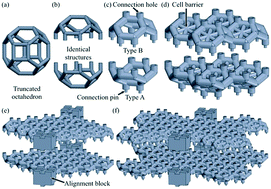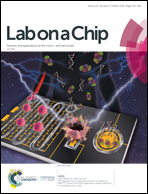3D arrays of microcages by two-photon lithography for spatial organization of living cells†
Abstract
This paper addresses a nanoengineering approach to create a fully three-dimensional (3D) network of living cells, providing an advanced solution to in vitro studies on either neuronal networks or artificial organs. The concept of our work relies on stackable scaffolds composed of microcontainers designed and dimensioned to favor the geometrically constrained growth of cells. The container geometry allows cells to communicate in the culture medium and freely grow their projections to form a 3D arrangement of living cells. Scaffolds are fabricated using two-photon polymerization of IP-L 780 photoresist and are coated with collagen. They are stacked by mechanical micromanipulation. Technical details of the proposed nanofabrication scheme and assembly of the modular culture environment are explained. Preliminary in vitro results using PC12 cells have shown that this structure provides a good basis for healthy cell growth for at least 16 days. Our approach is envisioned to provide tailor-made solutions of future 3D cell assemblies for potential applications in drug screening or creating artificial organs.



 Please wait while we load your content...
Please wait while we load your content...